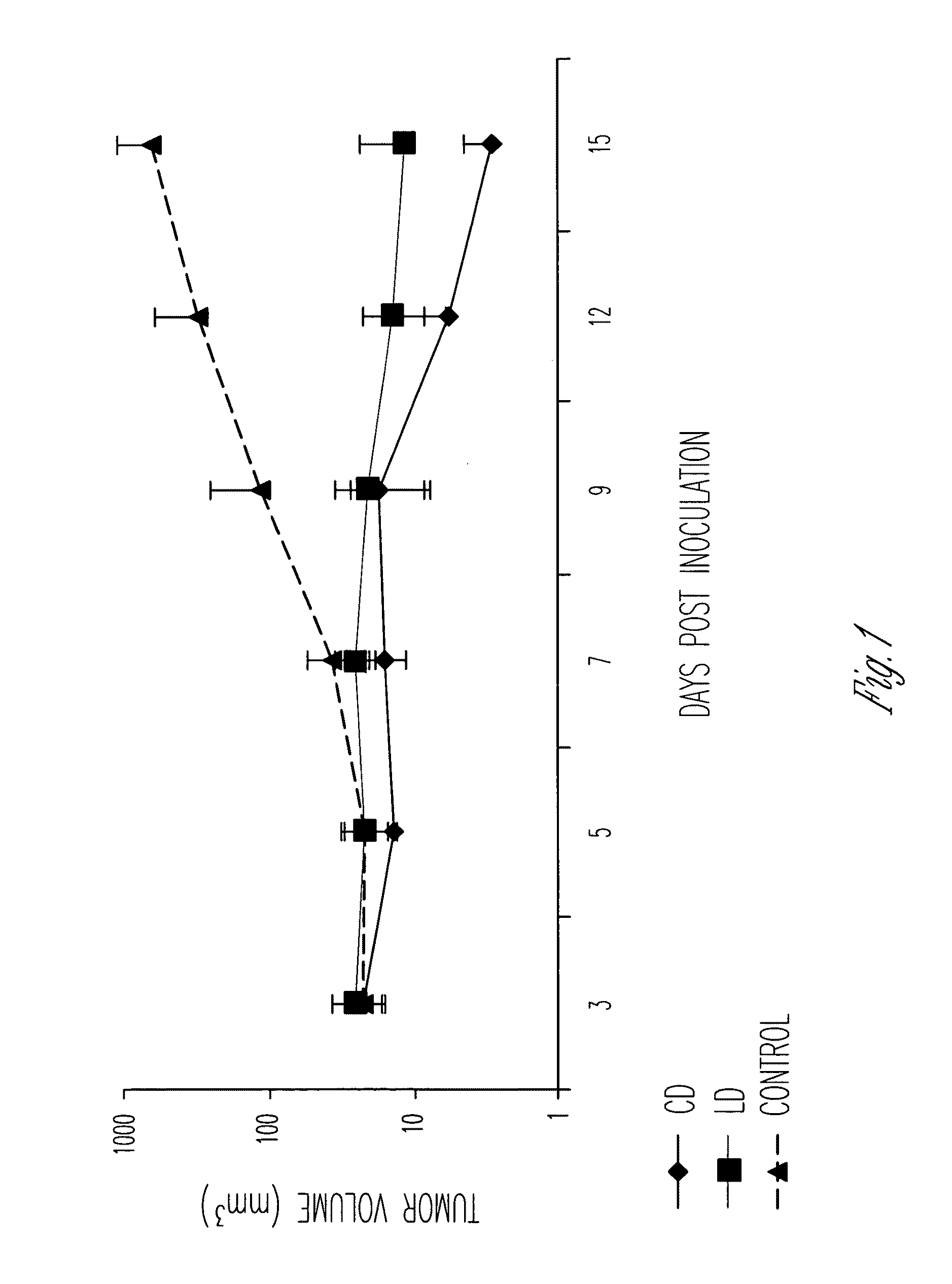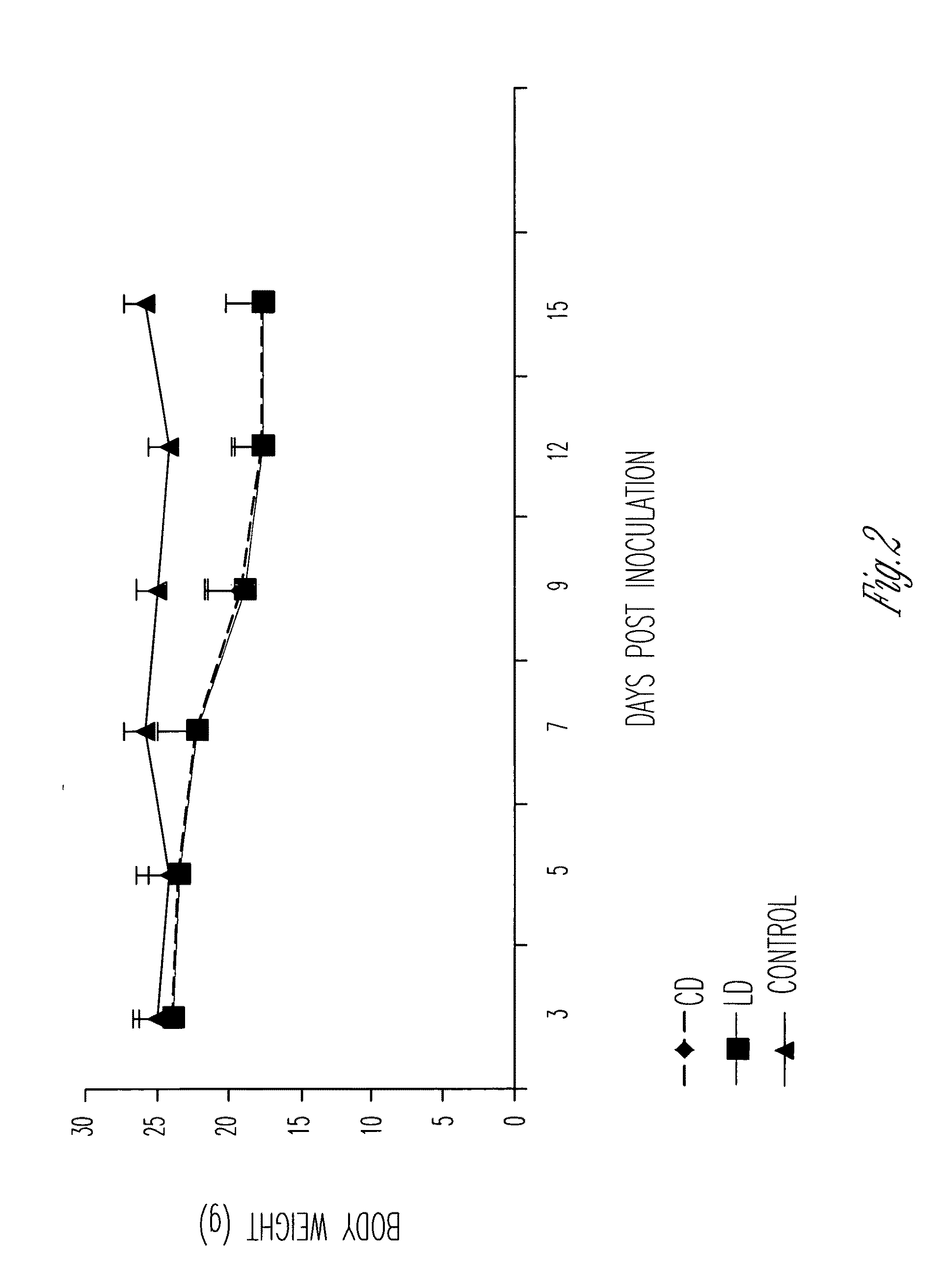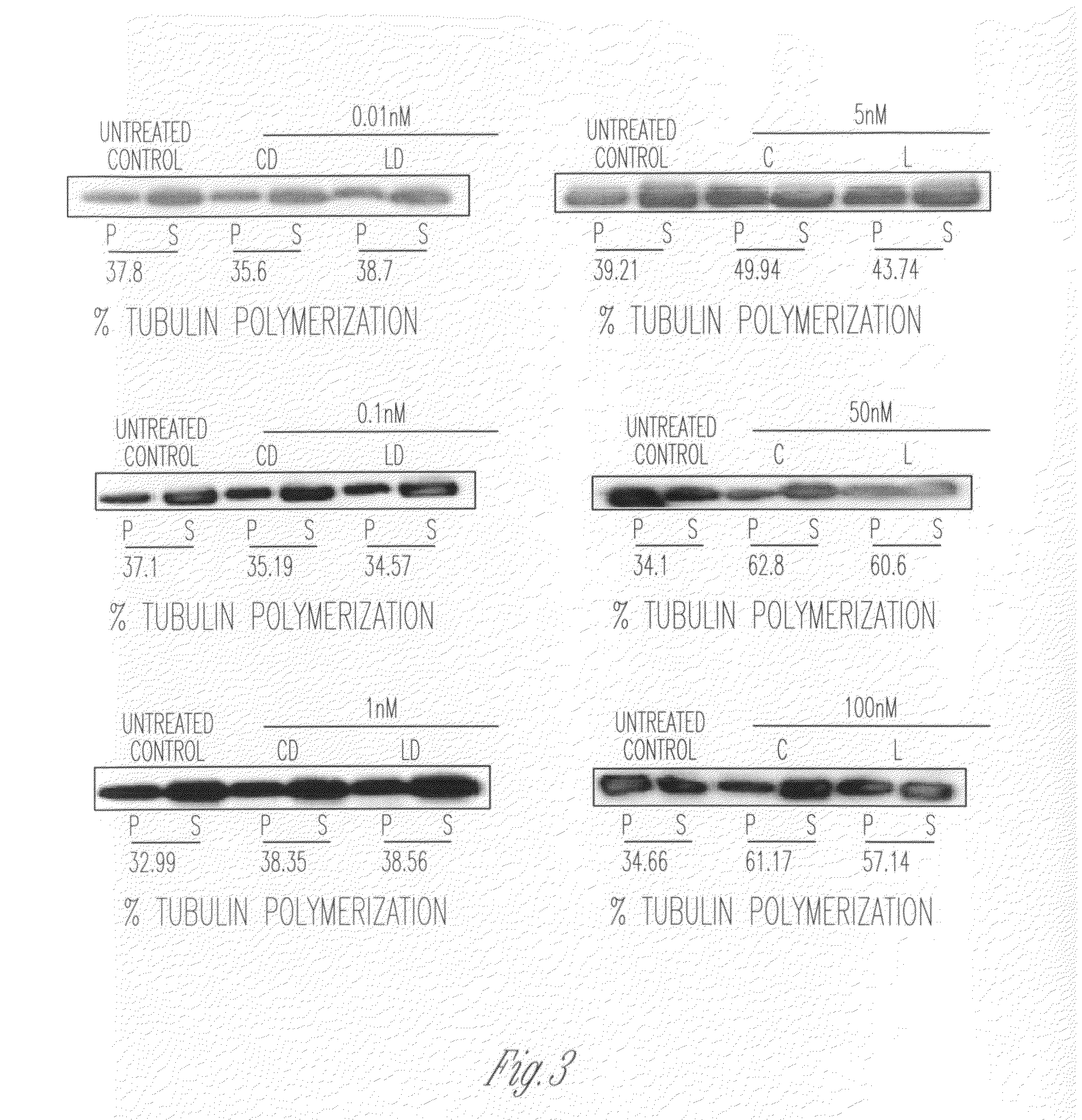Proliposomal and liposomal compositions of poorly water soluble drugs
a technology of liposomal compositions and poorly water soluble drugs, applied in the direction of medical preparations, antineoplastic agents, pharmaceutical active ingredients, etc., to achieve the effect of high
- Summary
- Abstract
- Description
- Claims
- Application Information
AI Technical Summary
Benefits of technology
Problems solved by technology
Method used
Image
Examples
example 1
Liposomal Composition of Docetaxel
Step-1: Preparation of Concentrate or Proliposomal Composition
[0199]50 mg of Hydrogenated Soya phosphatidyl choline (HSPC, 45.01 mole %), 15 mg Cholesterol (26.61 mole %), 20 mg Egg phosphatidyl glycerol (EPG, 17.79 mole %), and 0.15 mg of α-Tocopheryl acetate (0.22 mole %) were dissolved in 1 ml of absolute ethanol which was then heated at 70° C. for 2 minutes using water bath to obtain a clear solution of lipids. The solution was brought down to room temperature, to which was added 12 mg of amorphous Docetaxel (10.37 mole %). The Concentrate or Proliposomal Composition of Docetaxel so obtained was mixed using magnetic stirrer / vortex shaker until clear. The solution thus obtained was filtered through 0.22 μm filters.
Step-2: Preparation of Liposomal Composition
[0200]0.5 ml of the Concentrate or Proliposomal Composition of Docetaxel, as obtained in Step-1 was rapidly injected at a rate of 0.16 ml / second using a 1 ml syringe with a hypodermic needle o...
example 2
Liposomal Composition of Docetaxel
Step-1: Preparation of Concentrate or Proliposomal Composition
[0202]50 mg of Hydrogenated Soya phosphatidyl choline (HSPC, 45.01 mole %), 15 mg Cholesterol (26.61 mole %), 20 mg Egg phosphatidyl glycerol (EPG, 17.79 mole %), and 0.15 mg of α-Tocopheryl acetate (0.22 mole %) were dissolved in 1 ml of a mixture of absolute ethanol and propylene glycol (9:1 ratio), which was then heated at 70° C. for 2 minutes using water bath to obtain a clear solution of lipids. The solution was brought down to room temperature, to which was added 12 mg of amorphous Docetaxel (10.37 mole %). The Concentrate or Proliposomal Composition of Docetaxel so obtained was mixed using magnetic stirrer / vortex shaker until clear. The solution thus obtained was filtered through 0.22 μm filters.
Step-2: Preparation of Liposomal Composition
[0203]0.5 ml of the Concentrate or Proliposomal Composition of Docetaxel, as obtained in Step-1 was rapidly injected at a rate of 0.12 ml / second ...
example 3
Liposomal Composition of Docetaxel
Step-1: Preparation of Concentrate or Proliposomal Composition
[0205]50 mg of Hydrogenated Soya phosphatidyl choline (HSPC, 45.19 mole %), 15 mg Cholesterol (26.73 mole %) and 20 mg Egg phosphatidyl glycerol (EPG, 17.84 mole %) were dissolved in 1 ml of absolute ethanol which was then heated at 70° C. for 2 minutes using water bath to obtain a clear solution of lipids. The solution was brought down to room temperature. 12 mg of amorphous Docetaxel (10.23 mole %) was then added to this solution. The Concentrate or Proliposomal Composition of Docetaxel so obtained was mixed using magnetic stirrer / vortex shaker until clear. The solution thus obtained was filtered through 0.22 μm filters.
Step-2: Preparation of Liposomal Composition
[0206]0.5 ml of the Concentrate or Proliposomal Composition of Docetaxel, as obtained in Step-1 was rapidly injected at a rate of 0.10 ml / second using a 1 ml syringe with a hypodermic needle of gauge 30 G into 7.5 ml of 5% Dext...
PUM
| Property | Measurement | Unit |
|---|---|---|
| temperature | aaaaa | aaaaa |
| particle size diameter | aaaaa | aaaaa |
| phase transition temperature | aaaaa | aaaaa |
Abstract
Description
Claims
Application Information
 Login to View More
Login to View More - R&D
- Intellectual Property
- Life Sciences
- Materials
- Tech Scout
- Unparalleled Data Quality
- Higher Quality Content
- 60% Fewer Hallucinations
Browse by: Latest US Patents, China's latest patents, Technical Efficacy Thesaurus, Application Domain, Technology Topic, Popular Technical Reports.
© 2025 PatSnap. All rights reserved.Legal|Privacy policy|Modern Slavery Act Transparency Statement|Sitemap|About US| Contact US: help@patsnap.com



